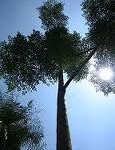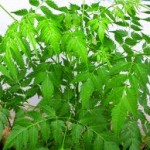Bagalunga is popular in Eastern Visayas particularly in Leyte where it is used as construction materials and other wood products.
The tree is still classified as a lesser used timber species and is not known commercially available in the local market.
Bagalunga tree grows remarkably fast, within eight years from planting, it can reach a diameter of over half a meter and a merchantable height of a dozen meters.
It can coppice, or give rise to young shoots that can be harvested for firewood, charcoal or use as fences and other light materials.
The study was made for the Philippine Council for Agriculture; Forestry and Natural Resources and Research and Development Institute; and the Natural Resources Management Program by Dr. Ramon Razal of the Department of Wood Science and Technology and College of Forestry, University of the Philippines, Los Baños, who headed the research team which looked at the potential of the bagalunga.
Bagalunga (Melia dubia Cav.) is one and only two species in the Philippines of the genus Melia. The highest concentration of the genus is in the old growth forests of Central Luzon, followed by the Cagayan Valley region and by Palawan island.
Bagalunga could also be found in other parts of the country. It grows in thickets, secondary forests, along beaches, flood plains, on hills and slopes and in elevations as high as 1,100 meters above sea level. It is a shade tolerant tree, that it can grow underneath coconut trees.
“Bagalunga has great potential to substitute for tree plantation crops and to be used as a reforestation species throughout the Philippines. The tree usually sprouts up in areas that have been burned or set on fire.
The most common trees used in reforestation are mahogany trees though there are species of trees like Gmelina which comes from overseas which are also fast growing trees which have adapted well to local conditions.
However, bagalunga tree has been overlooked which is an indigenous forest tree that equal if not surpass the growth or quality of tree species that come from abroad considering the homegrown bagalunga tree is resistant to local pests and diseases.
Bagalunga is a good material for housing, furniture, banca making, wood panels (door, wall and floor), window jalousies, making boxes and crates and miscellaneous wood works.



WHERE I CAN BUY THE SEEDLINGS OF THIS TREE–BAGALUNGA TREE. PLS CALL ME AT 09151709668. THANKS. ZALDY